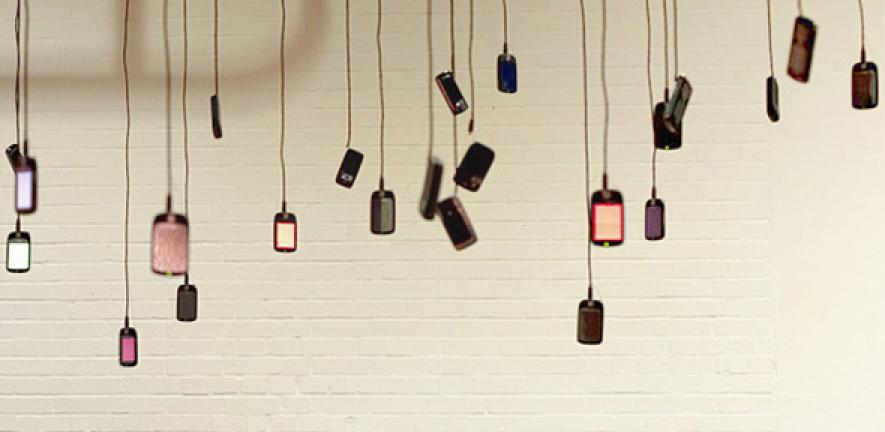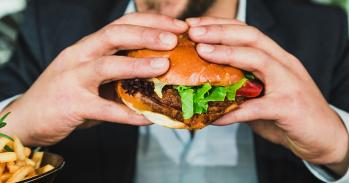
Worried you might be at risk from diabetes? Check your phone: it might help stop you getting the disease. And if you already have diabetes? Your phone might even help you monitor your condition at home.
Worried you might be at risk from diabetes? Check your phone: it might help stop you getting the disease. And if you already have diabetes? Your phone might even help you monitor your condition at home.
With smart holograms, there is no instrument. It’s just your smartphone. And soon, almost everyone will have one of those
Chris Lowe
It’s the middle of the afternoon. You hear the trill of an incoming text message on your phone. You pick it up, expecting it to be from a friend.
Skipping breakfast will make you overeat at lunch.
Ah yes, this must be from Professor Ambady Ramachandran. You’ve never met him and he doesn’t know you personally, but he has sent you this helpful reminder because you are one of over 20 million Indians at a high risk of developing type 2 diabetes. Tomorrow, you tell yourself, you will make sure you eat before going to work.
“It seems paradoxical that something as simple as text messaging could help prevent you from developing diabetes,” says Professor Nick Wareham, Director of the Medical Research Council (MRC) Epidemiology Unit at the University of Cambridge. And yet, the evidence suggests it might work.
In 2013, Ramachandran, who founded and runs a diabetes hospital in Chennai, India, and is President of the India Diabetes Research Foundation, reported the results of a study that found almost a third fewer men in the high risk group went on to develop diabetes if they received between two and four texts a week giving advice on diet and exercise.
“This is a big – and surprising – effect,” says Wareham. And India, as with many other countries worldwide, needs something big (and, possibly, surprising) to help it tackle the growing burden of diabetes and obesity. Recent estimates suggest there are 68 million people living with diabetes in India, the majority with type 2 diabetes. A mixture of poor diet and lack of exercise, low birth weight followed by rapid growth, and genetic predisposition – Indians tend to develop diabetes at a lower body-mass index than Caucasians – means that diabetes is twice as common in India as it is in the UK.
While targeted strategies aimed at high risk individuals are likely to be effective, there is no way they could be rolled out to 20 million people, says Wareham. “If you had to individually counsel that many people, it would be unaffordable. Simple, pragmatic, scalable approaches are the only ones that are feasible.”
Ramachandran’s study involved a relatively small sample, but such was its promise that he and Wareham have teamed up to see whether text messaging might be scaled up to a larger population, with support from the MRC and the Indian Council for Medical Research. An additional arm of the study, being carried out by Imperial College London, is looking at whether the same concept would work in the UK.
Wareham and colleagues use a combination of a risk score that they have developed, which looks at factors such as age, sex and weight, and a simple blood test to identify people at risk of developing diabetes: these are the individuals who are targeted by the text messages.
It is the pervasiveness of mobile phones that could make this scheme work: there are almost a billion mobile phones in India – the country ranks second only to China. Smartphones are still much less common, with just around one in six people in the country owning one, but this is expected to increase significantly, potentially making India the second largest market worldwide.
If, as expected, smartphones really do take off, they could hold the answer to helping those people unfortunate enough to develop diabetes to monitor their condition, says Chris Lowe, Emeritus Professor of Biotechnology at the Department of Chemical Engineering and Biotechnology in Cambridge.
“We’re interested in developing diagnostics that are appropriate for taking measurements at home or in the doctor’s surgery, without the need for a specialist,” says Lowe. For over a decade, he has been looking at making ‘smart’ holograms that are sensitive to chemicals or biological compounds.
Unlike conventional holograms, which are two-dimensional, Lowe’s holograms are three-dimensional, created by shining a one-nanosecond laser pulse into a gel, suspended in which are silver nanoparticles. The silver nanoparticles arrange themselves into planes, giving the hologram a particular colour. But when glucose – from a blood or urine sample – comes into contact with the hologram, it binds to sensors within the gel, known as receptors, causing the hologram to expand or contract; the planes move closer together or further apart and the light given off by the hologram changes colour, moving towards the blue or red end of the spectrum.
“You can see these changes visually, but to increase the accuracy you need to be able to quantify the change, and this is where smartphones come in,” he says. Using the phone’s camera and a downloadable app, it could be possible to give an accurate measurement of the level of glucose in the body. His colleague Dr Gita Khalili Moghaddam is working on software that would enable the app to operate in a real-world setting, compensating for variability between phones and the environment.
The technology works in a similar way to QR codes – the black-and-white square patterns which, when scanned on a phone, redirect you to information online. In fact, says Moghaddam, the holograms could themselves be QR codes. “You can save the patient’s information in the holographic QR code, so when you scan it and send off your glucose levels, embedded in this are your own details,” she says.
Lowe and colleagues are exploring ways of delivering the holograms, from strips of holograms through to contact lenses that measure glucose in tear fluid as a surrogate for blood sugar levels, and even to having holograms that can be tattooed onto skin. These could even do away with the need to take regular blood finger-prick tests.
Despite the hi-tech nature of this technology, part of its beauty lies in its cost. The holograms could be mass-produced at a very low cost – even if they were embedded into daily-use contact lenses, the cost would be negligible, making them particularly attractive in the developing world. At the moment, patients need special instruments to monitor their glucose levels – in areas such as rural India, these are often given away, but their cost then has to be incorporated into the disposable strips used by the instruments.
“With smart holograms, there is no instrument,” says Lowe. “It’s just your smartphone. And soon, almost everyone will have one of those.”

The text in this work is licensed under a Creative Commons Attribution 4.0 International License. For image use please see separate credits above.




